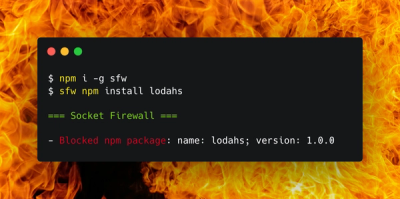
Security News
Package Maintainers Call for Improvements to GitHub’s New npm Security Plan
Maintainers back GitHub’s npm security overhaul but raise concerns about CI/CD workflows, enterprise support, and token management.
@mx-cartographer/recurringtransactionsmanager
Advanced tools
Package of RecurringTransactionsManager widget and components
To make it easy for you to get started with GitLab, here's a list of recommended next steps.
Already a pro? Just edit this README.md and make it your own. Want to make it easy? Use the template at the bottom!
cd existing_repo
git remote add origin https://gitlab.mx.com/mx/money-experiences/moneymap/cartographer/templates/ui-template.git
git branch -M master
git push -uf origin master
Use the built-in continuous integration in GitLab.
When you're ready to make this README your own, just edit this file and use the handy template below (or feel free to structure it however you want - this is just a starting point!). Thank you to makeareadme.com for this template.
Every project is different, so consider which of these sections apply to yours. The sections used in the template are suggestions for most open source projects. Also keep in mind that while a README can be too long and detailed, too long is better than too short. If you think your README is too long, consider utilizing another form of documentation rather than cutting out information.
Choose a self-explaining name for your project.
Let people know what your project can do specifically. Provide context and add a link to any reference visitors might be unfamiliar with. A list of Features or a Background subsection can also be added here. If there are alternatives to your project, this is a good place to list differentiating factors.
On some READMEs, you may see small images that convey metadata, such as whether or not all the tests are passing for the project. You can use Shields to add some to your README. Many services also have instructions for adding a badge.
Depending on what you are making, it can be a good idea to include screenshots or even a video (you'll frequently see GIFs rather than actual videos). Tools like ttygif can help, but check out Asciinema for a more sophisticated method.
Within a particular ecosystem, there may be a common way of installing things, such as using Yarn, NuGet, or Homebrew. However, consider the possibility that whoever is reading your README is a novice and would like more guidance. Listing specific steps helps remove ambiguity and gets people to using your project as quickly as possible. If it only runs in a specific context like a particular programming language version or operating system or has dependencies that have to be installed manually, also add a Requirements subsection.
Use examples liberally, and show the expected output if you can. It's helpful to have inline the smallest example of usage that you can demonstrate, while providing links to more sophisticated examples if they are too long to reasonably include in the README.
Tell people where they can go to for help. It can be any combination of an issue tracker, a chat room, an email address, etc.
If you have ideas for releases in the future, it is a good idea to list them in the README.
State if you are open to contributions and what your requirements are for accepting them.
For people who want to make changes to your project, it's helpful to have some documentation on how to get started. Perhaps there is a script that they should run or some environment variables that they need to set. Make these steps explicit. These instructions could also be useful to your future self.
You can also document commands to lint the code or run tests. These steps help to ensure high code quality and reduce the likelihood that the changes inadvertently break something. Having instructions for running tests is especially helpful if it requires external setup, such as starting a Selenium server for testing in a browser.
Show your appreciation to those who have contributed to the project.
For open source projects, say how it is licensed.
If you have run out of energy or time for your project, put a note at the top of the README saying that development has slowed down or stopped completely. Someone may choose to fork your project or volunteer to step in as a maintainer or owner, allowing your project to keep going. You can also make an explicit request for maintainers.
Performing general no-harm testing on Cartographer is done by completing the following routines in their appropriate development environment. Testing these routines will provide insight into the health of Cartographer as it functions as widget UI for Serenity.
Load Storybook
Interact with the component’s UI
Storybook Controls
Storybook Controls gives you a graphical UI to interact with a component's arguments dynamically without needing to code
Accessibility
Test component compliance with web accessibility standards
Storybook toolbar
Dark Mode. This toolbar item lets you change the theme and toggle between light and dark mode
View Port. The Viewport toolbar item allows you to adjust the dimensions of the iframe
Devtools
FAQs
Package of RecurringTransactionsManager widget and components
We found that @mx-cartographer/recurringtransactionsmanager demonstrated a healthy version release cadence and project activity because the last version was released less than a year ago. It has 17 open source maintainers collaborating on the project.
Did you know?

Socket for GitHub automatically highlights issues in each pull request and monitors the health of all your open source dependencies. Discover the contents of your packages and block harmful activity before you install or update your dependencies.

Security News
Maintainers back GitHub’s npm security overhaul but raise concerns about CI/CD workflows, enterprise support, and token management.

Product
Socket Firewall is a free tool that blocks malicious packages at install time, giving developers proactive protection against rising supply chain attacks.

Research
Socket uncovers malicious Rust crates impersonating fast_log to steal Solana and Ethereum wallet keys from source code.